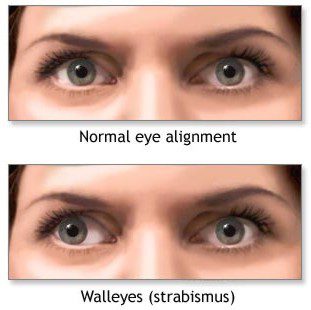Lazy Eye
The term “lazy” eye means different things to different people. Some consider an eye to be “lazy” when it is turned “in” or “out” (strabismus).
Description
The term “lazy” eye means different things to different people. Some consider an eye to be “lazy” when it is turned “in” or “out” (strabismus). Others regard a lazy eye to be one in which the vision never properly developed during childhood (amblyopia).
During the first 8-10 years of life, the visual system is developing. For this to happen properly, the eye needs to send clear images to the brain. Once the visual system is developed and the child is older than 8-10 years of age, the system is secure and stable. However, if the eye is not able to send clear pictures to the brain during these first 8-10 years of life-as in the case where glasses are needed but not provided, or one eye has strabismus-the visual system may never fully develop. This is called “amblyopia” and the child’s vision is permanently impaired. If this condition is discovered early-within the first 8 years of life, vision can often be recovered. Once the child is beyond this formative period and no corrective measures have been taken, the child’s ability to reach “full” vision potential is lost. This is why it is crucial to have every child’s eyes tested early and regularly. Early detection is simple and sight-saving.

Symptoms
Most amblyopia is discovered during routine eye screening – without any symptoms having been noticed. The sign of amblyopia is decreased visual acuity, but this is not usually found unless the child has his or her vision checked regularly.
Treatment
The key to treating amblyopia is starting early. If this condition is discovered early-within the first 8 years of life, vision can often be recovered. Children should have their vision examined regularly by a pediatric ophthalmologist to ensure that this condition is corrected early in life.

